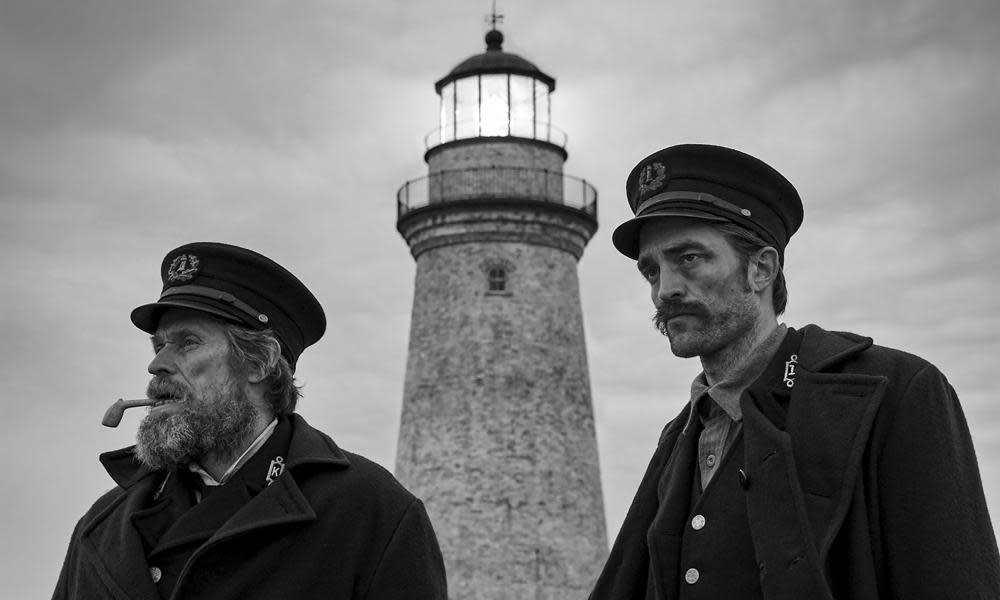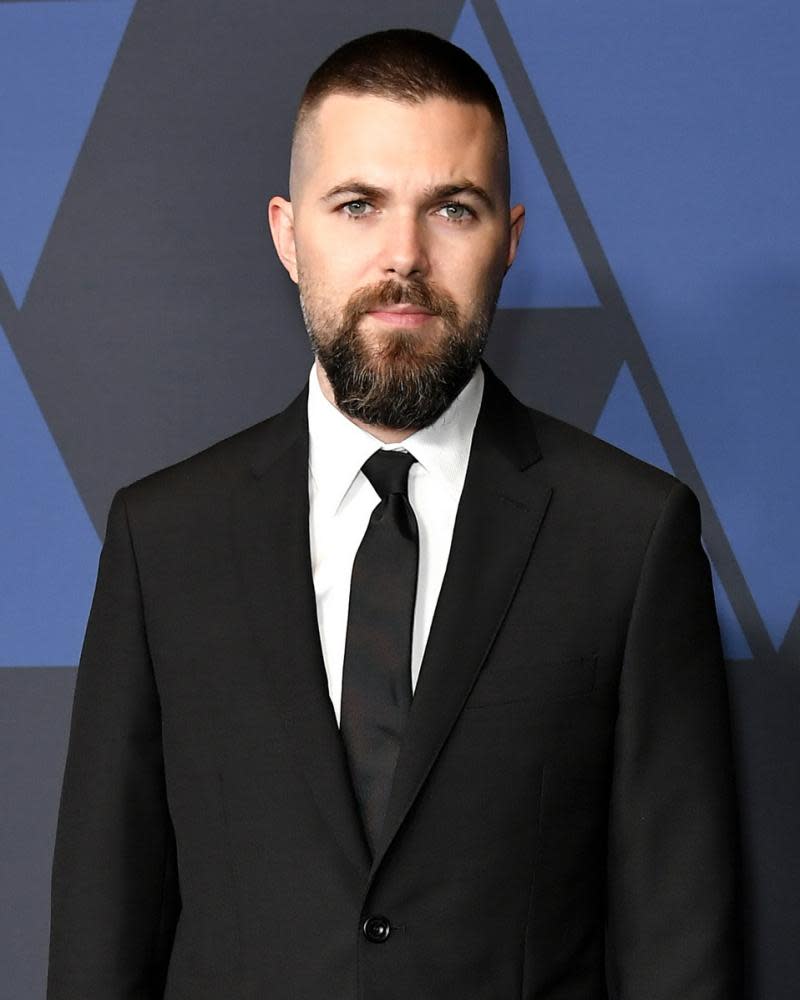The Lighthouse director Robert Eggers on storms, seagulls and spraying Robert Pattinson with a hose

This is getting very granular for me,” says Robert Eggers, half-jokingly, half-uncomfortably. We were talking about Eggers’s obsession with history, but somehow we have drifted on to his childhood habit of dressing up in costumes. “My mom would take me to [US clothing chain] Joann Fabrics and buy some Lycra for me, and I would hand-sew a Wolverine costume that would look quite lumpy but serviceable.” He would often go to school as a superhero or Captain Hook or Abraham Lincoln. The teachers were supportive. But when he was 11 or 12, some of the other kids beat him up for his unconventional dress sense. “Then I decided to get very invested in dressing cool, which is something, unfortunately, now I’m still conscious of. So that became sort of my thing that helped me not be an outsider.”
A couple of decades on, he still looks pretty dapper: dressed in black from head to toe, swept-back black hair and a neatly trimmed but resplendently full beard. You would not class him as an outsider, exactly, but Eggers seems to be defiantly doing things his own way. His 2015 feature The Witch was as singular a debut as we have seen for some time: a strange, solemn folk horror whose exacting recreation of 17th-century New England was rapturously received. Within 10 minutes of The Witch winning the directing prize at Sundance, Eggers was being offered the chance to direct franchise movies, he says, “which made me realise how fickle and crazy and strange and silly this industry was, because no one had seen my film. They had just heard that I was, like, the new thing.”

After a few dalliances with the mainstream, including a stalled remake of his favourite film, Nosferatu, Eggers thankfully stuck to his own path, which seems to be heading away from the mainstream. Or rather, the mainland. The Lighthouse is set on an island off the coast of 1890s New England, where lighthouse keepers Willem Dafoe and Robert Pattinson are holed up for a horror-tinged two-hander that steadily becomes more drunken, disorienting and deranged. Shot in 35mm black and white, with an almost square aspect ratio, The Lighthouse feels more like a hallucination from the actual 19th century than a modern movie. At the same time, it is so earthy and claustrophobic you can practically smell the booze and the farts.
Eggers now lives in Brooklyn but was raised in New Hampshire. “We sort of grew up in The Witch and would go on summer vacations to The Lighthouse,” he says. He wrote the latter with his brother Max, and, as with The Witch, historical homework was essential. The salty sea-dog prose is informed by his study of 19th-century dialect, and the plot has elements of Herman Melville, Robert Louis Stevenson and Edgar Allan Poe, with perhaps a dash of HP Lovecraft. The maritime imagery and symbolism seem to beckon all the way down to the primal depths of our subconscious: crashing waves, seagulls, mermaids, tentacled leviathans and, of course, the phallic symbol of the title. “This movie is over the top and grotesque in all the definitions of the word, and the imagery is heavy-handed,” Eggers admits. “That’s by design. I would love to make a movie that both Freud and Jung would be furiously eating their popcorn to.”
If The Witch could be read as a tale of feminist ascendancy (“That wasn’t my intention; I just wanted to make a movie about witches”), then The Lighthouse is all about men losing their bearings, ironically while maintaining a navigational aid. It has also been interpreted as an allegory of generational conflict, with Pattinson’s surly underling growing increasingly resentful of Dafoe’s weatherbeaten old tyrant. But Eggers was not really thinking about beaming out a commentary on modern times. “I try to stay locked in my alchemical cell, sealed off from the present as much as possible,” he jokes. “But the zeitgeist does work its way in there. There were times when me and my brother were like: ‘Why are we writing a movie about two dudes right now? This is not good.’ But when we got our first draft out we were like: ‘Oh, OK. We’re actually sort of illustrating the problem.’”
What they were not particularly thinking about was how to make the film. Eggers ought to have learned his lesson making The Witch (“You can’t train a goat, let me tell you”), but a combination of artistic ambition and youthful naivety pulled him towards what you might call the Werner Herzog school of film-making, where you engineer a real-life situation that is uncomfortably close to the fictional story, then film the results. “I knew it was going to be much harder than I could imagine, but it was so much worse than that!” Eggers laughs. “We were all isolated in this little fishing community in the middle of nowhere, like, going mad.”
Interior scenes were filmed on sound stages in Halifax, Nova Scotia, but the lighthouse complex, round which much of the action takes place, was purpose-built on a remote cape. Eggers began to understand the origins of all those maritime superstitions: “They come from trying to organise chaos, and if you live a life at sea, she is stronger than anything.” The weather was either too sunny or too stormy. There were gale-force winds and freezing rains. Camera equipment broke down, lenses fogged up, and it turned out that seagulls were no easier to work with than goats. “It was fun overcoming challenges, but day-to-day it was not … you know … fun,” says Eggers.
Related: The Lighthouse review – Robert Pattinson shines in sublime maritime nightmare
It was not just the seagulls; cast and crew also became tired and irritable. Pattinson admitted in an interview that the fifth take of walking down a beach being sprayed in the face with a firehose was the closest he had come to punching a director. But Eggers says that he did not really need to push his actors. “Rob and Willem, if you look at their career choices, they choose adventurous, difficult things,” he says. “That’s what they’re after.” In fact, Eggers says Pattinson turned down a role in one of his other movies (which ultimately did not get made) because it wasn’t challenging enough.“I didn’t know he wanted to punch me in the face that day, because he’s very professional. And not only that, the wardrobe supervisor told me he would have done another take if he needed to.”
It got to Eggers himself as well, he admits. “I feel like you have to be the general when you’re on set. I saved my crying for my hotel room.” But now that the ordeal is over, Eggers can feel justifiably satisfied. The Lighthouse has earned rave reviews and awards nominations, including a prize at Cannes and Oscar and Bafta nominations for cinematographer Jarin Blaschke. It has also cemented Eggers’s reputation. In a film landscape where risk-taking and trailblazing are endangered qualities, he is among a handful of dedicated, literate, intrepid young film-makers who are still committed to the cause, along with Ari Aster (Midsommar), the Safdie brothers (Uncut Gems) and Trey Edward Shults (Waves). “It’s shocking to me anyone gave me support to make this,” says Eggers. He puts his position down to luck as much as anything. “The fates weave a mysterious thread.”
Given his experiences so far, it would be understandable if Eggers announced his next movie would be set in a nice warm kitchen but, actually, it looks as if he is heading even further out there. Details leaked recently of his next project: a seafaring Viking epic set in 10th-century Iceland. He has already been talking to historians, he admits. As long as there are no goats or seagulls in it, what could go wrong?
The Lighthouse is in cinemas from Friday 31 January


